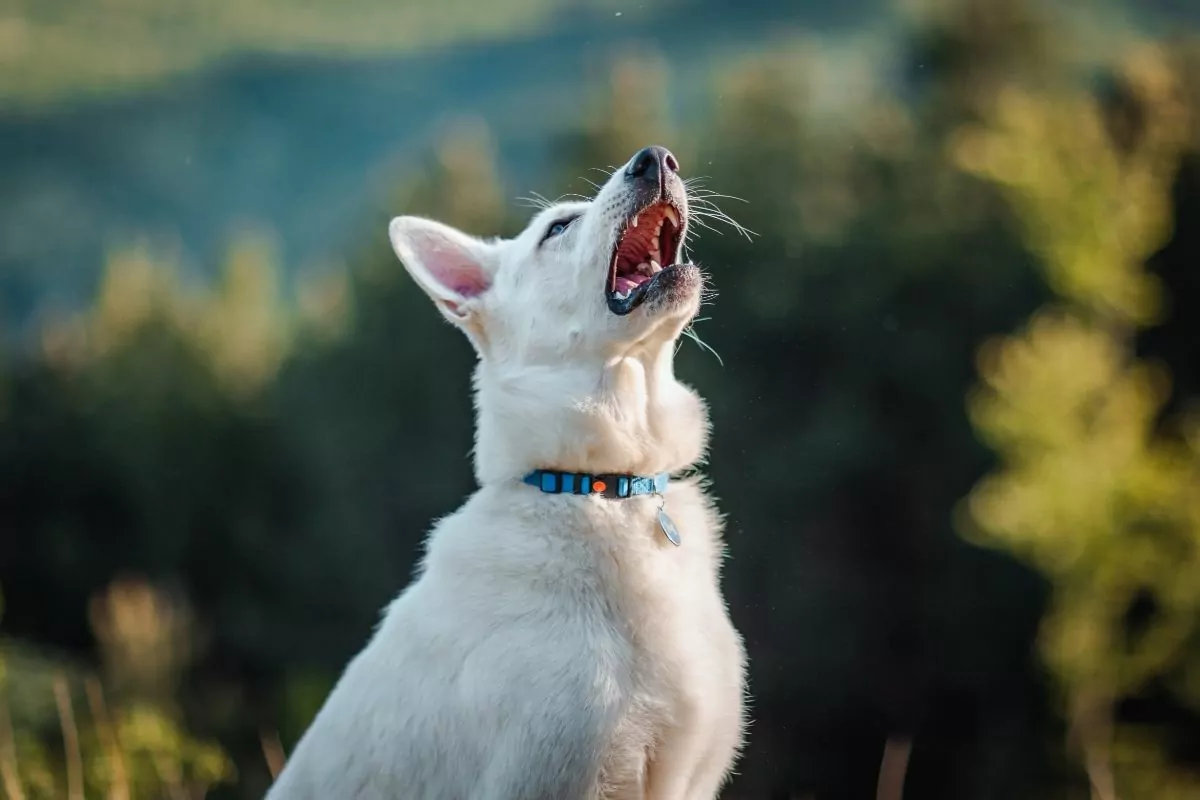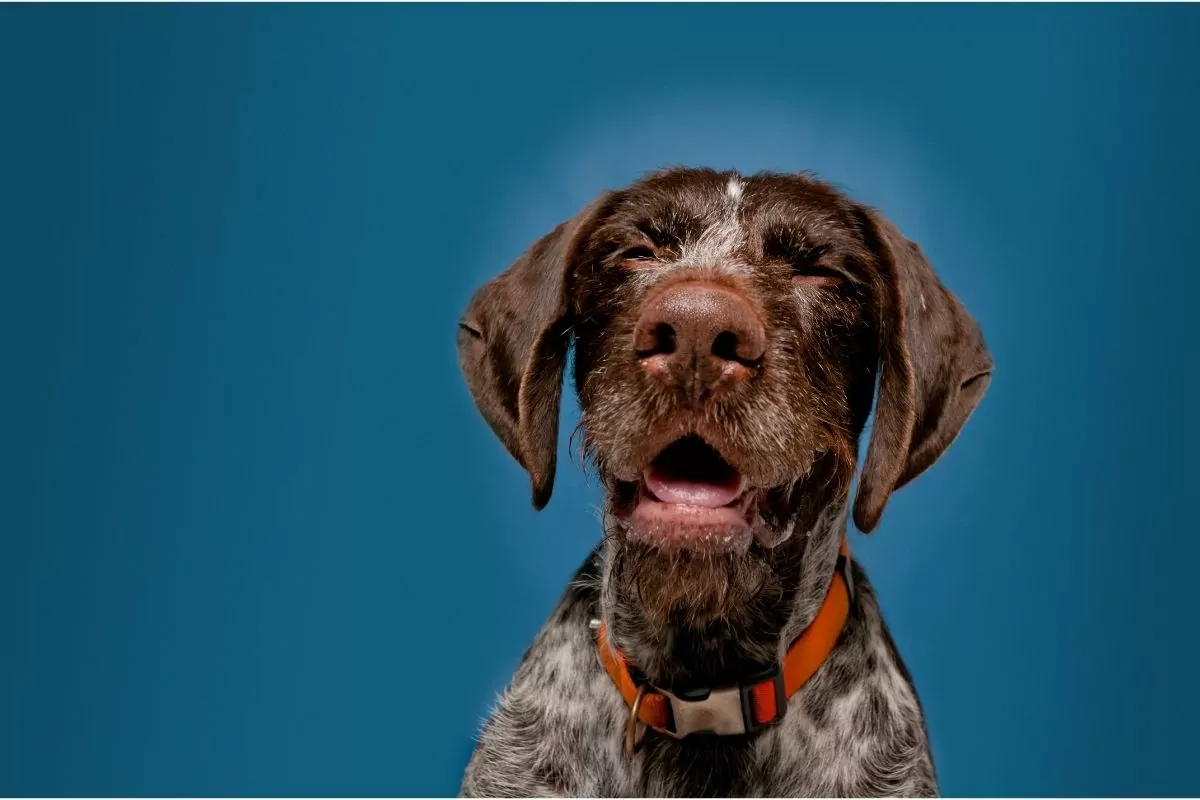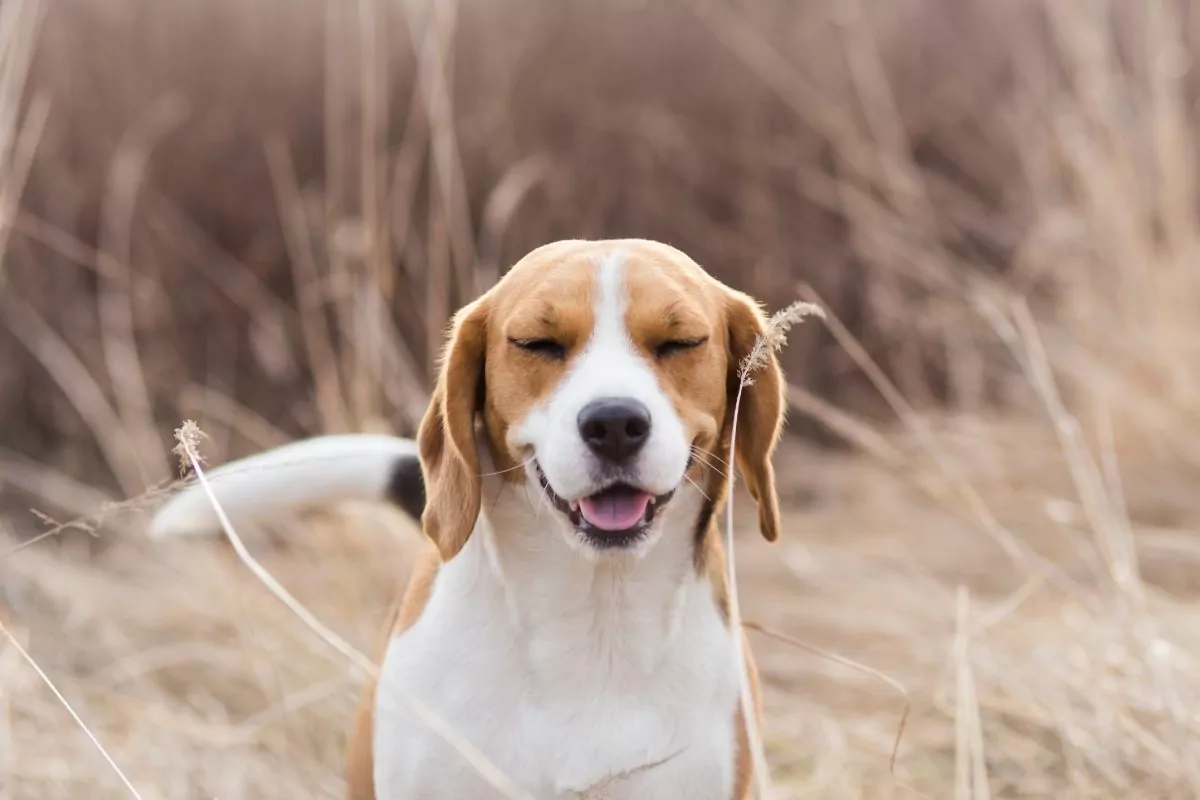Dog Reverse Sneeze? What Do You Mean?
Reverse sneezing in dogs is a phenomenon where the air is rapidly pulled into the nose producing an unusual noise. Reverse sneezing is different from normal sneezing where the air is pushed out of the nose.
The process is also known as the “mechanosensitive aspiration reflex” when your dog snorts repeatedly at once you may be witnessing a reverse sneeze episode.
So what causes reverse sneezing in dogs and should you be concerned if your dog starts doing it? Read on to find out more.

What is Reverse Sneezing and What Does it Sound Like?
Reverse sneezing is a respiratory condition that can occur in some dogs, it is more common in brachycephalic breeds (canines with flat noses) such as boxers, pugs, and bulldogs as well as other small dog breeds.
When an irritant is in the nose some dogs may rapidly breathe in through their nose to clear it rather than push air out as with regular sneezing.
During a reverse sneezing episode, dogs will make a noise that can sound like choking. Owners will typically explain the sounds resembling a “goose honking”. Although it can be alarming to witness, reverse sneezing is usually harmless.
What Happens When a Dog Reverse Sneezes?
Typically a reverse sneeze will occur when there is an irritant in the nasal passage. A dog will usually reverse sneeze multiple times in an episode. You may notice your dog crane their neck or it becoming stiff. In addition, they may wheeze or gasp, which can be distressing to see.
When a dog reverse sneezes air is sucked into the nose rapidly to alleviate irritation, in a similar way to sniffing, just much more forceful.
A dog will usually reverse sneeze because the soft palate in the throat is spasming, preventing normal airflow which could produce a normal sneeze. Instead of being able to push air out of the nose, the dog needs to draw air in to clear the irritation and stop the spasm.
Diagnosing Reverse Sneezing in Dogs
The first time your dog reverse sneezes, it can be very scary as you may think your dog is choking. For this reason, it is a good idea to get your dog examined by a veterinarian to determine the cause. If you think your dog is choking, this is an emergency, and you need to seek veterinary care as soon as possible.
It can be helpful if you can record the episode so that your veterinarian can view the footage.
When your animal is brought to see a veterinarian, they will diagnose reverse sneezing by considering the signalment, history, clinical signs and by performing an examination. Other causes of respiratory noise will need to be ruled out, such as an infection, collapsing trachea, foreign bodies, polyps, or tumors.
A key to helping your veterinarian suspect reverse sneezing is if your dog returns to normal quickly after the event, more severe issues such as airway obstruction will continue to affect the animal after the initial event.
If the diagnosis isn’t immediately apparent, your veterinarian may recommend further diagnostics such as blood tests, allergy tests, and radiographs to rule out other conditions.
What Causes Reverse Sneezing in Dogs?
The exact cause of reverse sneezing isn’t clear, but anything that irritates the nose and throat can cause a reverse sneeze. Examples include:
- Food and drink, particularly if they are ingested too quickly
- Nasal mite infection
- Becoming overly excited and panting
- Masses and tumors in the nasal passage
- Exercise, especially strenuous activities
- Foreign bodies such as seeds
- Pulling on the lead
- Irritants in the environment such as pollen, dust, perfume, smoke, and chemicals
- Allergies
- Tracheal collapse
- Infections can cause inflammation
- Abnormal conformation as seen in brachycephalic breeds such as an elongated soft palate or narrow trachea
- Small breeds seem to be more likely to reverse sneeze, likely due to their smaller airways
Is Reverse Sneezing in Dogs Dangerous?
In most cases, reverse sneezing is not dangerous for dogs. Most dogs will have a short episode and then continue their normal behavior afterward without any health repercussions.
When your dog has no underlying diseases, the process of reverse sneezing should have no negative repercussions for your pet.
In dogs with other respiratory signs and reverse sneezing, this could indicate something more serious that should be investigated by a veterinarian.

Signs of Underlying Health Conditions
In some instances, reverse sneezing can be a sign that there is a more serious underlying condition occurring. Examples include heart disease, asthma, and tracheal collapse.
These conditions will commonly carry other signs with them, such as:
- Difficulty breathing
- Persistent cough
- Wheezing
- Panting
- Lethargy
- Exercise intolerance
- Pale or blue-colored gums
- Faster breathing than usual at rest
- Coughing induced by touching the throat
- Reduced appetite
- Swelling of the abdomen (ascites)
If you notice any of these signs or are concerned your dog is having trouble breathing, it is essential to have them examined by a veterinarian as soon as possible.
Treatment for Reverse Sneezing in Dogs
Most dogs that reverse sneeze require no medical treatment. In some instances, a veterinarian may prescribe an anti-inflammatory, antihistamine, or decongestant to help with sneezing.
An underlying cause, such as tracheal collapse, will need to be treated first to help prevent reverse sneezing. However, it is possible that once the underlying condition is managed, your dog may stop reverse sneezing.
How to Stop Reverse Sneezing in Dogs
If your dog is reverse sneezing, you typically don’t need to intervene. However, if you would like to help and think your dog would tolerate it, you can gently stroke the neck and keep them calm. Once the spasm of the soft palate stops, your pooch will typically calm down, and you could offer them some water.
It is infrequent for a dog to develop complications from reverse sneezing, but contact your veterinarian if you are concerned.
How Long Does Reverse Sneezing in Dogs Last?
A typical reverse sneezing episode should last less than a minute, although they have been reported to last longer.
What is the Difference Between a Dog Coughing and Sneezing?
Reverse sneezing can be confusing for owners who have never witnessed it, as they may confuse it with coughing. In addition, both coughing and sneezing (or reverse sneezing) can sound similar but are quite different.
Coughing involves expelling air from the lungs and out of the mouth resulting in a hacking noise. A dog will usually have their mouths open and may sometimes gag if they cough too much. A dog may cough when its throat is palpated, or its collar is pulled. Dogs that develop canine cough will cough often.
Reverse sneezing involves rapid air movement into the nose, causing snorting or “goose honking sounds.” A typical sneeze involves rapid air traveling out of the nose and is typically involuntary.
It can be helpful to watch some videos to clarify whether your dog is sneezing, reverse sneezing, or coughing, as these conditions can have different causes.

That’s a Wrap!
As you will have learned today, reverse sneezing is just that, a sneeze in reverse! Instead of the air being pushed out of the nose, it is pulled in to relieve irritation in the nose or throat. Therefore, dogs with shorter snouts, such as Bulldogs and other small breed dogs, are more likely to reverse sneeze.
Anything that can irritate the nose or throat can cause a reverse sneeze, such as a grass seed or allergies. A veterinarian should be able to diagnose reverse sneezing easily, but it is helpful to bring along a video of the episode if you catch one.
The good news is that on its own, reverse sneezing is rarely cause for concern, usually only lasting a few seconds. However, if your dog’s reverse sneezing is combined with other signs such as a persistent cough or difficulty breathing, there could be something else, and you should seek veterinary attention.
You may find your dog benefits from a gentle stroke of their throat while they are having an episode of reverse sneezing, but in most cases, it will resolve quickly without intervention.
